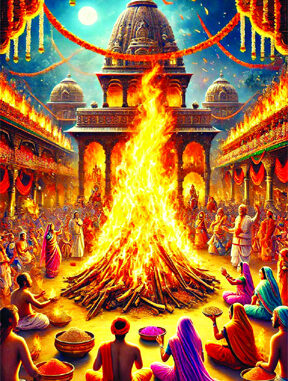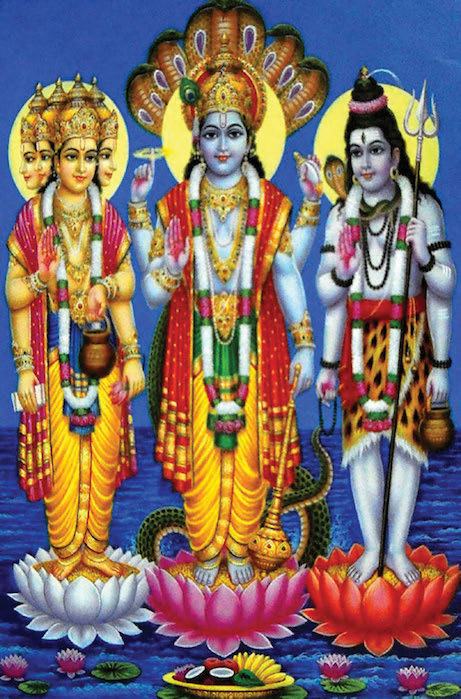
Holashtak is a significant period in the Hindu calendar that occurs in the eight days leading up to the festival of Holi. It is mainly observed in North Indian states such as Uttar Pradesh, Bihar, Rajasthan, and Madhya Pradesh. The word “Holashtak” is derived from two Sanskrit words: “Hola,” which refers to Holi, and “Ashtak,” meaning eight, signifying the eight days preceding the festival.
During this period, specific activities such as marriage ceremonies, housewarming rituals, and other auspicious events are generally avoided. Holashtak is believed to be inauspicious due to astrological influences, and it marks a time for spiritual reflection and preparation for the grand celebration of Holi.
Significance of Holashtak
Holashtak has deep roots in Hindu traditions, mythology, and astrology. It is considered an unfavorable time for starting any new ventures. The planetary positions during this period are believed to create instability and disturbances in people’s lives. However, it is also a time of devotion, purification, and penance leading up to Holi.
Mythological Significance
Holashtak is associated with the legend of Prahlad and Hiranyakashipu, an essential story from Hindu mythology. Hiranyakashipu, a demon king, opposed his son Prahlad’s devotion to Lord Vishnu. During Holashtak, Hiranyakashipu subjected Prahlad to severe trials and punishments to force him to abandon his faith. However, Prahlad remained steadfast, leading to the intervention of Lord Vishnu in the form of Narasimha, who ultimately destroyed Hiranyakashipu. The story highlights the triumph of good over evil and sets the stage for Holika Dahan, observed a day before Holi.
Astrological Importance
Astrologically, Holashtak is considered an inauspicious period due to planetary transitions. It is believed that during these eight days, planets like the Sun, Moon, Mars, Mercury, Jupiter, Venus, Saturn, and Rahu undergo significant changes, leading to instability in people’s lives. As a result, Hindus refrain from initiating important life events, such as weddings and business ventures, to avoid misfortune.
Rituals and Observances During Holashtak
Despite its inauspicious nature, Holashtak is a time for spiritual activities, penance, and devotion. Here are some of the significant rituals observed during these eight days:
Avoidance of Auspicious Ceremonies
– Hindus do not conduct weddings, engagement ceremonies, housewarming rituals, or any new ventures.
– Temples and priests discourage devotees from performing any new religious activities like Griha Pravesh (housewarming) or Mundan Sanskar (head tonsuring ceremony for children).
Holika Danda Sthapana
– On the first day of Holashtak, a wooden pole, known as Holika Danda, is planted at a designated place in villages or towns.
– This pole symbolizes Holika, the demoness who was burnt in the fire during Holika Dahan.
– People start accumulating wood and combustible materials around this pole for the bonfire to be lit on the eve of Holi.
Fasting and Charity
– Devotees observe fasts during Holashtak, especially those seeking spiritual growth and inner peace.
– It is considered highly meritorious to donate food, clothes, and money to the needy.
– Performing Annadanam (offering food) and Gau Seva (serving cows) are also common practices.
Bhajan and Kirtan
– People engage in devotional singing, bhajan, and kirtan to seek divine blessings.
– Many temples organize Holi Satsangs, where saints and spiritual leaders deliver discourses on the significance of Holi and devotion.
Preparation for Holika Dahan and Holi
– Holashtak marks the beginning of Holi preparations.
– Families start gathering colors, sweets, and festive items for the grand celebration.
– Markets become vibrant with various colors, water guns, and sweets like gujiya, malpua, and thandai ingredients.
Regional Variations of Holashtak
While Holashtak is mainly observed in North India, some regions have unique ways of marking this period:
Uttar Pradesh and Bihar
– In Varanasi and Mathura, Holashtak is observed with special religious rituals.
– Devotees perform Radha-Krishna bhajans and prepare for the grand Lathmar Holi in Barsana.
Rajasthan
– The state celebrates Holashtak with vibrant folk performances and fairs.
– In towns like Pushkar, people participate in traditional Phoolon Ki Holi (Holi with flowers).
Punjab
– In Punjab, Sikhs observe Hola Mohalla, a tradition started by Guru Gobind Singh.
– The festival includes martial arts displays, kirtan, and community gatherings.
West Bengal
– Though Holashtak is not strictly observed, Bengal celebrates Dol Purnima, a festival dedicated to Lord Krishna.
Scientific Perspective on Holashtak
From a scientific point of view, Holashtak coincides with the seasonal transition from winter to summer. This period often brings changes in temperature and weather patterns, which may lead to physical and mental unrest. Some experts suggest that avoiding major life decisions during this time may have originated as a precautionary measure to ensure stability and well-being.
Holashtak is an important period in Hindu tradition that precedes the festival of Holi. While it is considered inauspicious for new beginnings, it is also a time of spiritual reflection, devotion, and preparation for the grand festivities. The observances during these eight days reinforce the message of faith, patience, and the ultimate victory of good over evil. As Holika Dahan and Holi approach, Holashtak serves as a reminder of the rich cultural and mythological heritage that continues to be celebrated with devotion and enthusiasm.





Be the first to comment